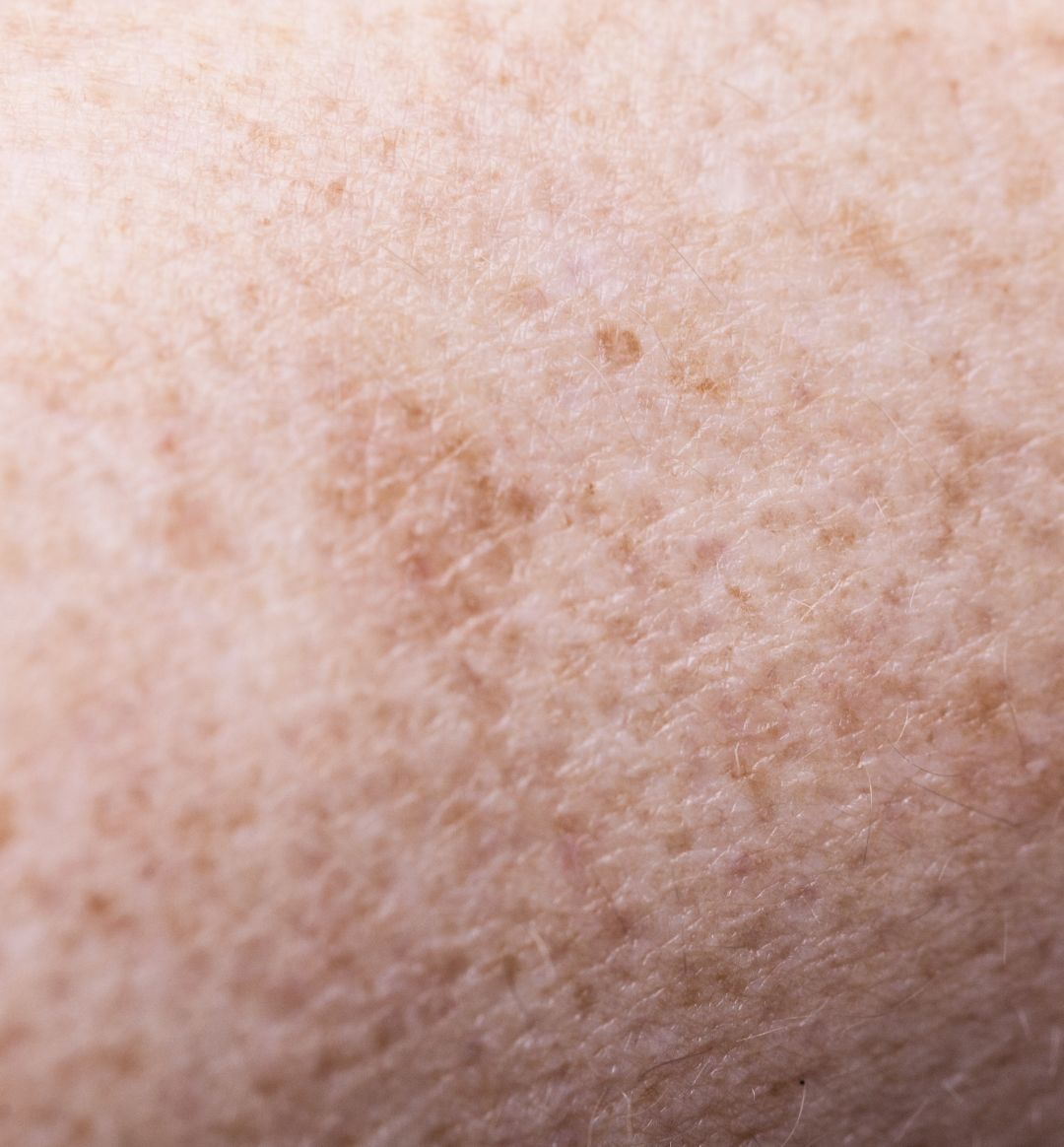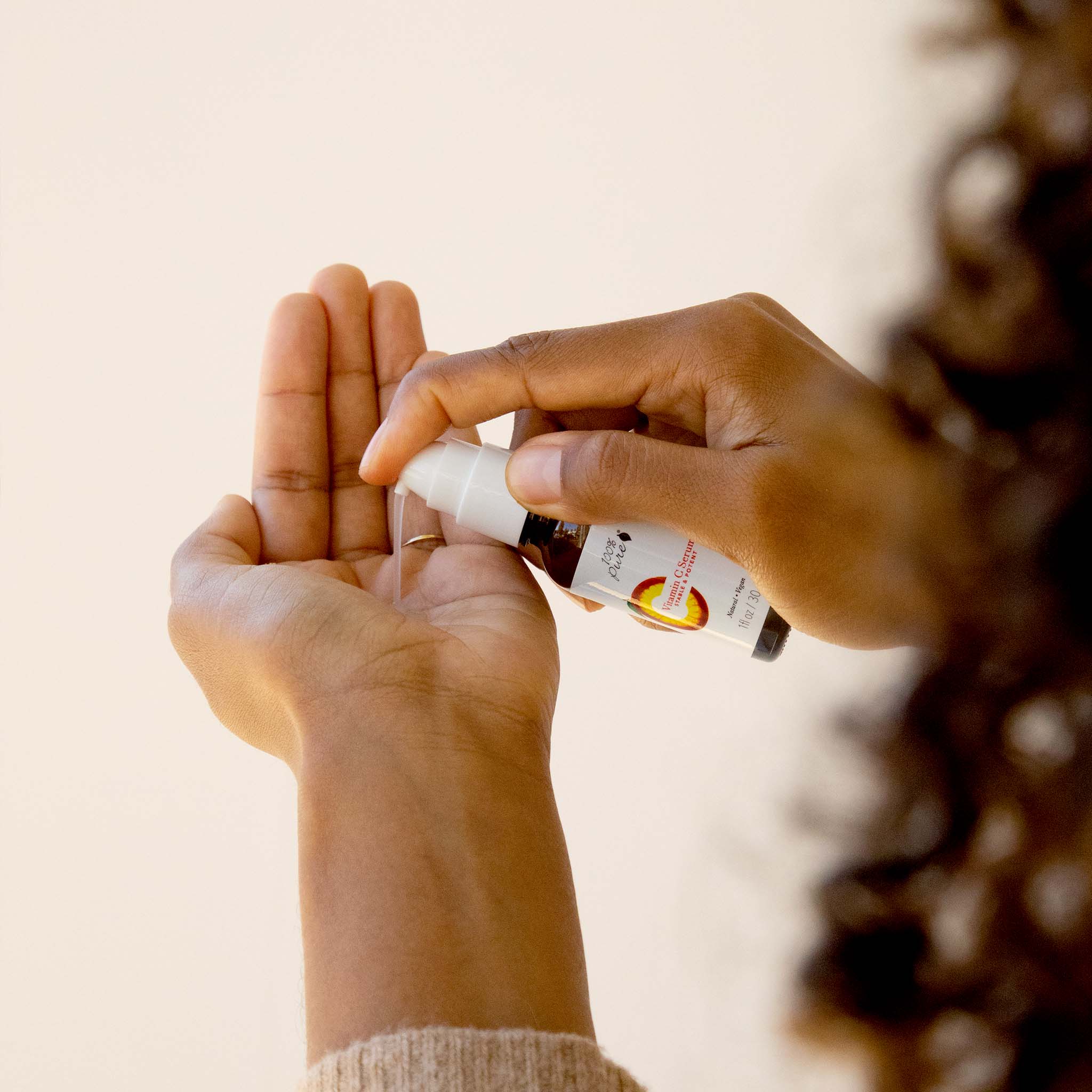
Laser hair removal is a popular cosmetic procedure that utilizes laser technology to target and remove unwanted hair from various parts of the face and body. While permanent laser hair removal is relatively safe and effective, some people may experience black dots after the treatment. These black dots, also known as hyperpigmentation, are a common side effect of laser hair removal. Especially in people with darker skin tones. Let’s see how these appear and how to minimize your chance of getting pigmentation.
This article also discusses how long does pigmentation take to fade after laser and how to treat hyperpigmentation from laser hair removal.

Hyperpigmentation After Laser Hair Removal
The black dots that appear after laser hair removal are called “post-inflammatory hyperpigmentation.” They occur when the laser treatment causes damage to the hair follicle and surrounding skin. This results in an increased production of melanin, which is the pigment that gives colour to the skin. The increased melanin causes the affected areas to appear darker than the surrounding skin.
Hyperpigmentation can appear as small, dark spots that are usually temporary and fade over time. In some cases, it may take several months for the pigmentation to fade completely. If your pigmentation is slow to fade, it may be treated with topical lightening creams, or in severe cases where the pigmentation may need a little more help, medical strength skin peels that can lift it off further.
How to Avoid Pigmentation After Laser Hair Removal?
- Ensure you choose the safest laser with wavelength specific to your skin type. So for example, if you have an olive or darker skin tone, you should only be treated with ND Yag wavelength.
- Avoid sun exposure and sun beds for at least 4–6 6 weeks prior your laser treatment and repeat your patch test before resuming treatment.
- Avoid sun exposure and sun beds for a minimum of 2 weeks after your treatment
- Report any changes in your medical status to your practitioner, especially if you are taking new medications, so they can rule out contra indications and ensure to use safe settings in line with laser protocols.
Effective laser hair removal should be available for everyone but to ensure you don’t suffer such side effects, your practitioner should guide you through and explain what you must avoid doing before and after each of your treatment from your very first consultation.
What is Hyperpigmentation?
When it comes to skin health, we always recommend drinking water, sleeping more, and following a good diet and skin care regimen. Sadly, these won’t be enough to eliminate dark areas on your face or body. Hyperpigmentation, commonly identified as dark spots or dark skin patches, occur when our pigment-producing cells are triggered to become bigger and more productive.
There are several triggers to this overproduction of melanin (the main pigment in our skin), which leads to hyperpigmentation on parts or all over the skin. Birth control, excessive UV radiation, and heat exposure can all contribute to it. It’s been shown in studies that high temperatures cause blood vessels to dilate and expand, which can potentially spike pigment production.
But prolonged exposure to direct sunlight or extreme heat are not the only triggers for hyperpigmentation. Injuries to the skin, such as those that result from laser treatments, can cause or exacerbate pigmentation issues.
What Is post-laser Laser Hyperpigmentation? How Does It Happen?
With the plethora of advanced skin lasers out there, we’re pretty excited at the perspective that these lovely light beams can address just about any skincare concern faster than your average face wash and moisturizer duo do. But that excitement is zapped away if you recover from a laser treatment with more skin woes than you went in to treat.
Post laser hyperpigmentation (PLH) is one of the common skin issues faced after laser treatments. It is caused when skin makes extra melanin after it has been irritated or injured, which laser treatments do. PLH occurs if the wrong laser in general was used or if it was the incorrect laser for your particular skin type. It also occurs if you have an inflammatory condition of the skin.

Who Is More Susceptible to Post Laser Hyperpigmentation?
Though laser treatment sounds intimidating and seems to willingly target those with pre-existing inflammatory conditions, the pigmentation damage can happen to both men and women. With that said, there are particular skin types that are more susceptible to PLH.
Darker skin types are the most susceptible to the effects of laser treatment; in particular, Asian, Hispanic, and African American. These skin tones are not only more sensitive to the light therapy, but what type of laser was used. For instance, some lasers go deep within the skin, bypassing the surface layer of melanin; whereas other lasers don’t and can affect the melanin in the top layer of your skin, causing it to react.
Additionally, if you are already dealing with hyperpigmentation, or any inflammatory conditions, such as acne or eczema, studies show laser therapy can exacerbate the issue, which is known as postinflammatory hyperpigmentation (PIH).
How Long Does Pigmentation Take To Fade After Laser
It’s been said individual results vary, and that couldn’t be truer about laser procedures in general, or especially the side and lasting effects of PLH. It could be temporary while your skin recovers from reacting to the laser energy or heat, and will resolve on its own. Though it’s understandably difficult to be patient, the pigmentation could last one to two month’s post-treatment.
However, if the PLH is persistent, it could take multiple treatments, such as skin lightening products or facial peels (more on those treatments below), and time to see if the pigmentation will fade and your skin will go back to normal. Results also vary depending on if the laser treatment was more superficial and at the epidermal layer versus affecting the epidermis and the dermal or deeper layers, where melanin can get trapped and appear discolored.

Treatment for Hyperpigmentation After Laser Hair Removal
Treatment for post-inflammatory hyperpigmentation often involves more than one method. You could start with a more natural route with healthy, feel-good skin products and ingredients to help fade the hyperpigmentation (without the use of harsh ingredients or treatments) including these:
#1. An exfoliant to minimize dark spots by gently sloughing off dead skin cells with a physical exfoliant (like a facial scrub), or you can use a chemical exfoliant. When choosing the latter, stick with products containing AHAs like glycolic acid.
#2. An antioxidant similar to retinol, like vitamin C, which impedes dark spots and protects against UV damage. If you use a vitamin C product, make sure that it’s one that comes in a stabilized form, such as our lightweight Vitamin C Serum or the concentrated Vitamin C Boost.
#3. Natural brighteners , such our Fermented Rice Water Serum , which helps lessen the appearance of dark spots, and our Dark Spot Remover, which also features skin brightening papaya and matsutake mushroom extracts.
#4. Retinol , like our Restorative Overnight Balm, which can encourage skin cell turnover to help slough away dead skin cells, rejuvenate the skin, and lessen hyperpigmentation.
#5. Natural makeup that blends and matches your skin tone like a dream, including using color correctors under foundation or concealer for better coverage of hyperpigmentation.
#6. Sunscreen that can prevent PIH skin spots from darkening and new ones from forming – plus all the benefits sun protection has to offer!
There are professional treatments for hyperpigmentation, such as chemical peels and other laser therapies. Your doctor might suggest a combination therapy that includes a topical steroid, a retinoid, and formulas that feature the skin-lightening ingredient, hydroquinone. These are options that should be discussed with your board-certified dermatologist, as they can be harsh on your skin and can come with their own side effects.
It has been recommended not to treat PLH or post-inflammatory hyperpigmentation, with lasers. The heat and energy from laser treatment may make this hyperpigmentation worse by causing the pigment to ensnare itself even deeper in the skin. Again, any laser treatments should be discussed with your doctor.
Understandably, PLH is a pesky skin culprit that requires time and patience for your skin to recover from. Hopefully, with this information and options, you can better approach the option if you’re considering laser treatment and how your skin type, doctor, and laser type could be factored into your recovery for the best results.
In any case, make sure that you’re taking care of your skin with natural ingredients that work to rejuvenate it. In time, your skin and body will find a balance that leaves you with healthy, radiant skin.

